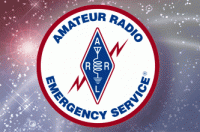Sometimes you just get it right, and this was definitely one of those occasions.
For the past 2 years, I have been encouraging all ARES Team members in Region 2 to take the on-line “CORE 4” courses (FEMA IS 100, 200, 700, 800), so as to become NIMS/ICS aware and to meet the NIMS volunteer compliance requirements. This weekend, I realized (again) that going “CORE 4” was more than just a good thing to do, it is vital.
While the “CORE 4” courses focus on the big picture of Emergency Management with NIMS and ICS, this AUXCOMM (Auxiliary Emergency Communications) Course focuses on where we belong in the grand scheme of things.
The course defines our supporting role and our responsibilities as Auxiliary Emergency Communicators who work for the Communications Unit and the Chain of Command (Incident Commander/ Logistics Section Chief/ Communications Unit Leader/AEC Manager/Auxiliary Emergency Communicators).
Besides exposing the class members to commercial equipment used by Emergency Management (new info for most hams) and their application, the class was given several Incidents and Scenarios to dive into as teams and figure out the: What, Why, Where, When, Who, and How to set up operational “Talk Paths” to the various sites and users. This incorporated working economically with resources (equipment and personnel) that were available, planning for shift changes, and adapting to local topography issues. It also necessitated becoming familiar with and using several key ICS Forms to help bring this all together.
Each class member came away with a greater appreciation for their role as an AEC (Auxiliary Emergency Communicator) working within the Incident Command System. We also ended up with a 2” 3 ring course binder with a CD, and a copy of the Connecticut Interoperability Field Operations Guide (CTIFOG).
BOTTOM LINE
WOW! What a course!
What an eye-opener!
Now I know why one of the prerequisites includes being “CORE 4” certified.
- You need that informational background in order to survive (and thrive) in this training course.
If you see this course being offered, JUMP AT THE OPPORTUNITY!
